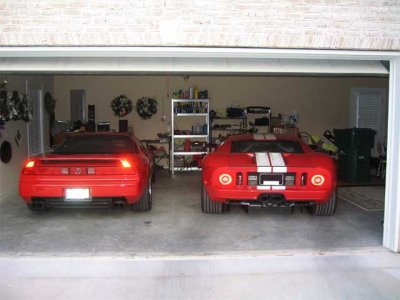TC said:
Ferrari.com - the site lists the specs of their current and past cars. The 3380 lbs for the F430 may have been for the spyder, which is heavier.
I'm afraid that Ferrari's site isn't the best place for unbiased information. The measured weight of 3,380 lbs was indeed for the F430 Berlinetta (coupe) not the Spider. Note that when C&D did test the F430 Spider in its June 2006 issue, it weighed in at 3,460 lbs. As bad as that sounds, it still considerably undercuts the Lamborghini Gallardo Spyder which weighed in at an astonishing 3,820 lbs!
TC said:
Regarding Ferrari being an "offender" of claiming lower weights for its cars, where do you get that from?
The issue of optimistic claimed curb weights as well as horsepower and torque figures by Ferrari has been a longstanding practice that goes back many decades. I'm hardly the first to observe or call attention to it.
TC said:
Also, the definition of curb weight is the weight of the car full of all fluids and a full tank of gas, no passengers and no cargo. Gross vehicle weight is the car fully laden with passengers and cargo. Car & Driver usually notes on its specs if the weight of the car is the manufacturer's claim (or estimate if the car is pre-production). Otherwise, the weight that they list is the weight of their test car (including driver and test equipment). Then they do some wacky "correction" of the results (for acceleration and braking) to account for the extra weight, temperature, roll-out, etc. That's why C&D usually posts the fastest acceleration times.
Your definition of curb weight is correct. But where are you getting your information about C&D including the driver and test gear in this calculation?
Here’s an excerpt from an article published by C&D in November 2002 that addresses this specific issue:
"Acceleration
Before testing any vehicle, we fill it with gas, check the fluids, and set the tires to the manufacturers' recommended pressures for light-load, high-speed running, if they are specified.
Then we weigh it. At the test site we measure humidity, barometric pressure, and temperature. To eliminate the effects of weather on performance, we employ proprietary empirical correction factors to adjust all results to dry air at 14.7 psi and 60 degrees Fahrenheit using PsyCalc 98 software (
www.linric.com) to crunch the weather data. Since cars run best in cold dense air, our correction tends to add time to results generated in low-temperature, high-pressure conditions and subtract time from hot-weather, low-pressure tests. To cancel the effects of the wind, all acceleration tests are run in both directions; the best runs in each direction are then averaged."
Here’s the link to the entire article for anyone who is interested.
http://www.caranddriver.com/features/2509/how-we-test-cars.html
Please note there is no correction for braking. But as far as using a correction factor for acceleration runs, it is probably the best way to directly compare and interpret field data gathered under a wide variety of conditions.








